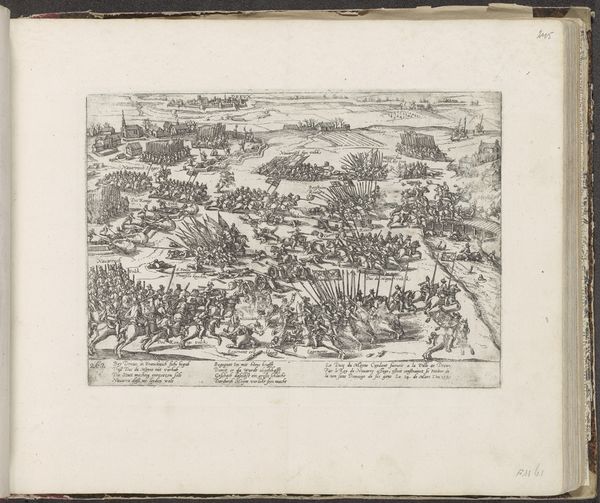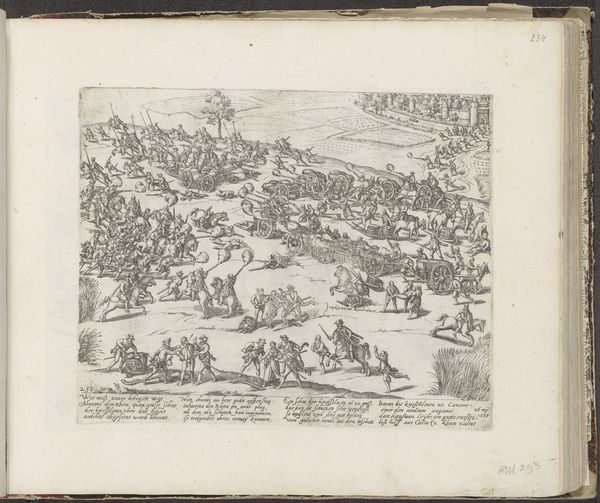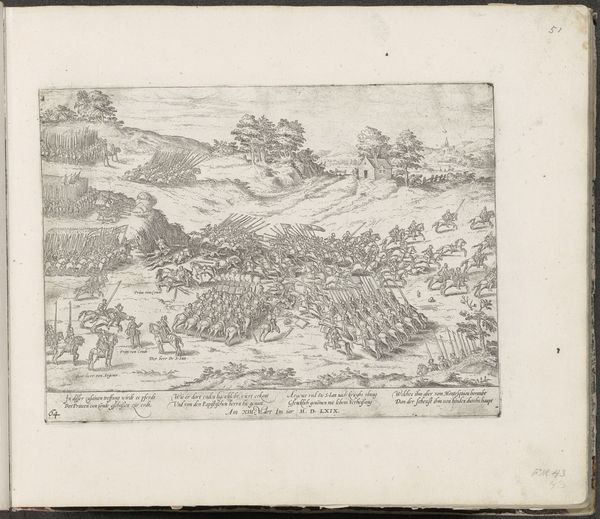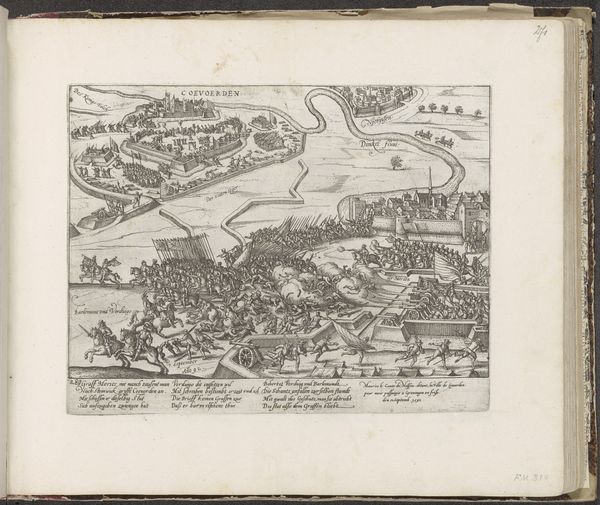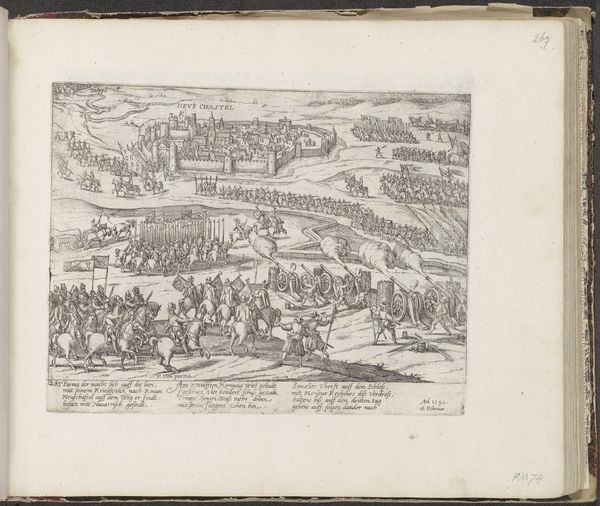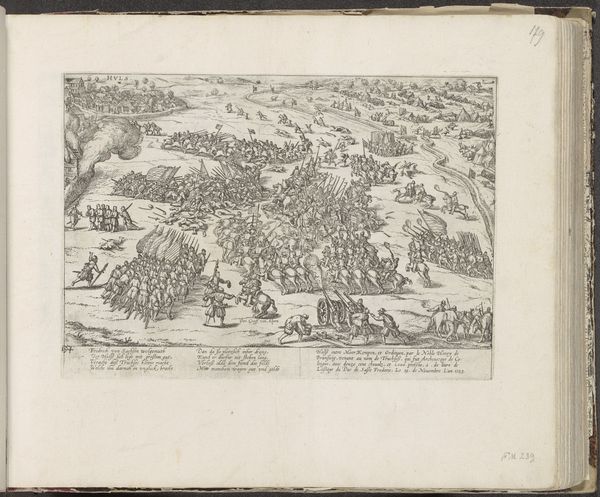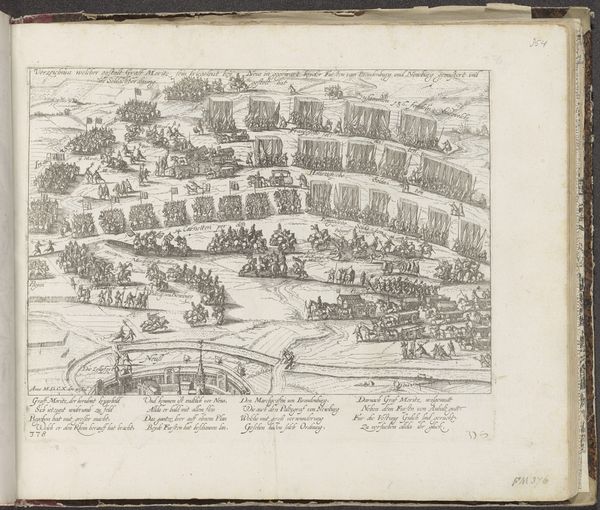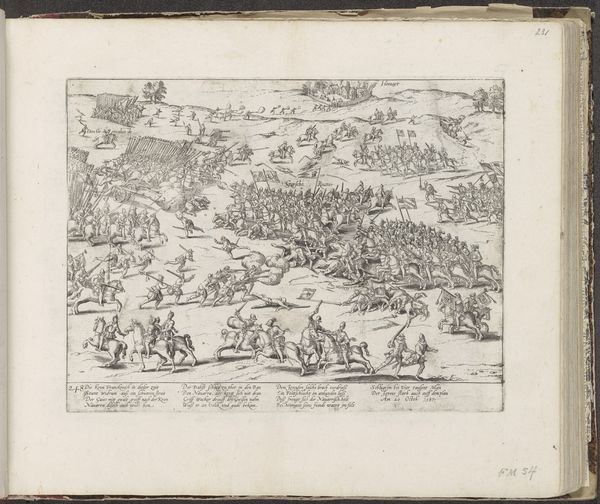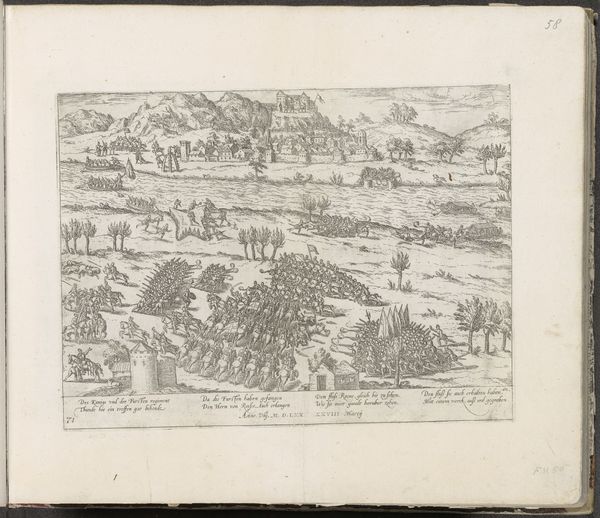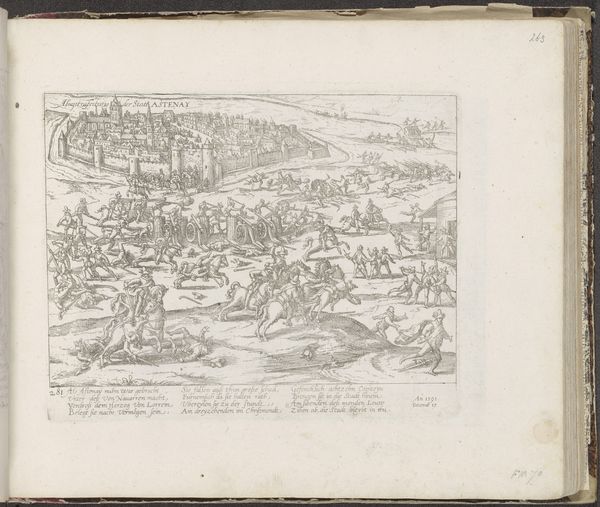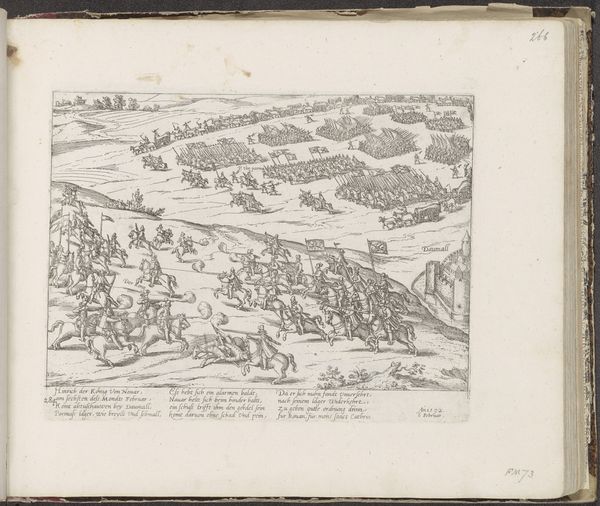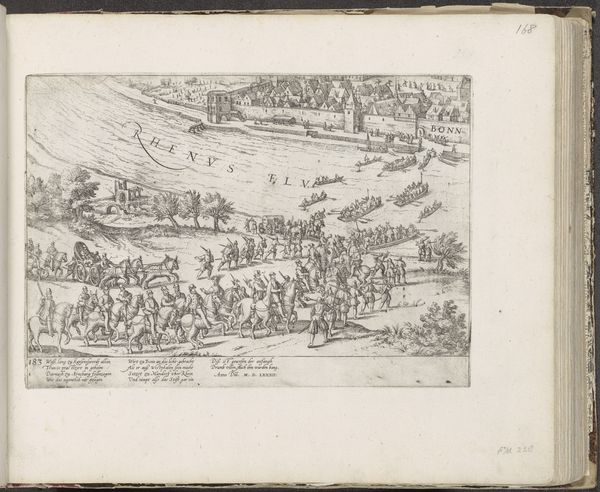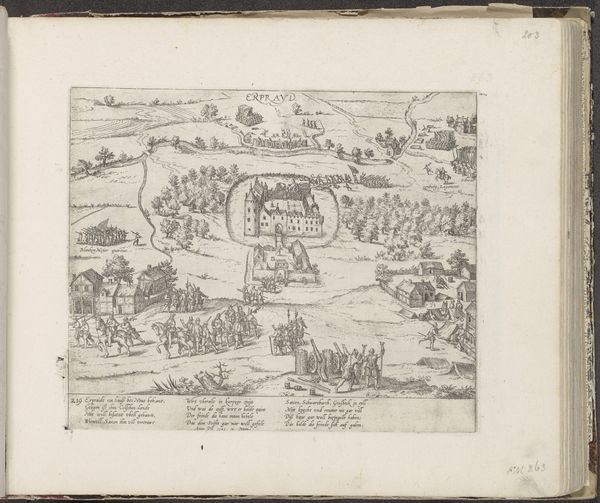
print, etching
#
medieval
#
narrative-art
# print
#
etching
#
landscape
#
figuration
#
history-painting
Dimensions: height 200 mm, width 286 mm
Copyright: Rijks Museum: Open Domain
Curator: Looking at this image, I'm immediately struck by its busyness! There's so much happening—swirling masses of people and horses—it's almost overwhelming, chaotic even. Editor: Chaos rendered meticulously, wouldn’t you agree? What we have here is an etching, dating from about 1574-1578, by Frans Hogenberg, titled "Slag op de Mookerheide, 1574," which translates to "Battle on the Mooker Heath, 1574." It currently resides in the Rijksmuseum collection. And from what I can see the composition itself, though intricate, employs a distinct perspective strategy, guiding our eyes to understand space and depth through varied positioning on the image area. Curator: Perspective strategy... I suppose! I just get lost in the swirls. Is there supposed to be like, a message? Does this thing give anyone hope? Or does it just serve the military? Editor: It's a historical piece, visualizing the Battle of Mooker Heath in the Eighty Years' War. The meticulous details capture the drama but do not directly involve us in that historical timeframe as an allegory to be acted out at a future point. Think instead that Hogenberg, through line work and massing, is illustrating a specific narrative with social resonance for its intended viewers. The density speaks to conflict and overwhelming events... Curator: Okay, well there's density all right! Seriously! But... Okay I think I can just about perceive that the individual lives and movements within that overwhelm all add up to a kind of tragedy overall? That a bunch of people are experiencing a loss. Editor: Precisely! Hogenberg uses figuration within the landscape to capture a story of both grand conflict and personal scale. But looking at those dense clusters, those patterns—I almost see semiotic play... the graphic rendering becomes its own language—the content and context serve something far larger through how it all works together. Curator: Okay, now that is just too smart! I like semiotics and stuff, but what I can most easily agree with right now is just the personal and historical level—that, well, it *means* something beyond just lines and shapes; for those people on both sides of that tragedy it probably continues to have implications. It’s still heavy stuff... Editor: True, the historical weight is undeniable, so yes... maybe in attending to that density with personal weight is the better approach. Curator: Right! I think it can allow you some sort of experience you may never forget after looking into such tragedy. Editor: Precisely, and the effect from one viewer to the next creates an immeasurable variable effect.
Comments
No comments
Be the first to comment and join the conversation on the ultimate creative platform.
